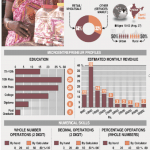Social Investing’s Pension Problem: Just a Speedbump, or Something More Ominous?
It hasn’t attracted much attention in the social investing sphere – far less than the ongoing stream of reports attesting to the sector’s competitive returns and growing momentum. But a new brief from the influential Center for Retirement Research (CRR) at Boston College could be significant – and not just because of its surprisingly bleak findings. The report, “New Developments in Social Investing by Public Pensions,” starts by noting that public pension funds have been screening investments for social impact since the 1970s, addressing issues ranging from apartheid in South Africa to terrorism, gun violence and climate change. Then it lowers the boom, finding that:
- These funds tend to produce lower returns, with unscreened funds “outperforming their ESG counterparts, often by a considerable margin.” One reason: fees in the ESG funds studied were roughly 1 percent higher than their unscreened counterparts, likely due to the additional resources required to perform the screening.
- Screening for social impact is often not effective in moving the market in a socially responsible direction, as other investors eagerly step in to buy divested stocks in (often profitable) industries like tobacco, firearms and gambling.
- This screening “may conflict with the views of beneficiaries and taxpayers, and interfere with federal policy.” As the report noted, it’s difficult for fund managers to determine how their diverse beneficiaries might feel about ESG screening that involves controversial issues like firearms proliferation and climate change. And shifting government policy can make it hard to screen for even seemingly uncontroversial goals like terrorism prevention – would investments in Iran be prohibited, for instance, even after the removal of sanctions on that country as part of the Obama administration’s nuclear deal?
In light of all these drawbacks, the CRR offers a pithy recommendation: “Public pension funds should not engage in social investing.”
The social investing movement has been riding a wave of momentum, and a single brief is highly unlikely to change that. But this analysis is still notable, and sobering – and not just because, unlike previous reports with similar conclusions, it comes from a source without an ideological axe to grind. Here are three main causes for concern:
- There’s a lot to lose: According to the CRR, the total assets for state and local pension plans amounted to $5 trillion in 2014 – a healthy potential market for impact-focused investments. In fact, the brief notes that “the bulk of social investing assets are in public pension funds,” with their screened assets amounting to $2.7 trillion in 2014. Yet these pension plans are also underfunded to the tune of some $3 trillion to $5.6 trillion – a crisis whose repercussions and potential solutions remain unclear. It’s easy to understand why researchers like the CRR – and perhaps the fund managers who listen to them – would be unwilling to roll the dice on social investments.
- The brief highlights weaknesses the social investing movement may need to address: Though they’ve largely become gospel among the sector’s advocates, it’s clear that confident claims of competitive returns and significant social impact still generate healthy skepticism in some parts of the broader market. The impact sector may need a stronger argument, and a longer track record, to truly gain traction when both public budgets and the retirement savings of millions of people are at stake.
- The brief also points to weaknesses the sector may not be able to address: It’s unclear if divestment really makes a difference in moving global industries in a more sustainable direction. And it’s even less clear that our society, broadly speaking, can agree on which direction that should be. It’s no surprise that the CRR would raise a red flag over public pensions screening for firearms and fossil fuels, in a country where significant numbers believe that gun rights are sacrosanct, and man-made climate change is a hoax. Can the impact sector truly move into the mainstream, when roughly half the country doesn’t share many of its core priorities?
The CRR’s assessment isn’t entirely negative. It points out that “social investing should not be discouraged for private investors,” to whom it provides “an avenue to direct investments away from activities they wish to discourage.” And its views may turn out to be overly alarmist, as social investing continues to evolve. But it could also prove to be an early indication that the sector’s future may ultimately lie not in mainstream acceptance, but in convincing those who will listen to do what they can.
James Militzer is the senior editor of NextBillion.
Photo by Images Money via Flickr
Homepage photo by frankieleon, via Flickr.
- Categories
- Investing



